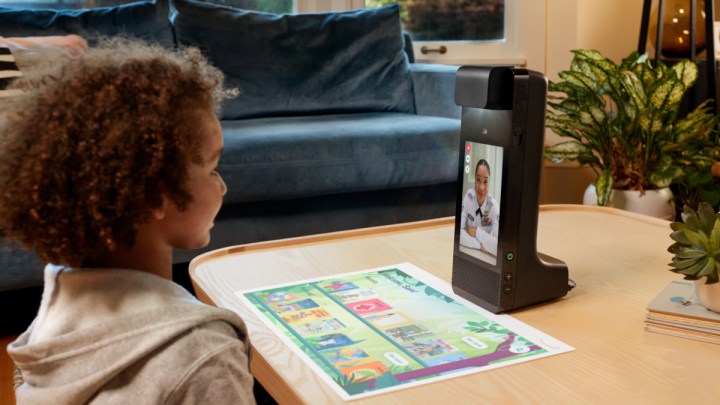Children are using screens more than ever, and some experts are worried that the trend could lead to a form of digital addiction.
A new study found that children’s media use has grown more in the last two years than in the four years prior. State lawmakers across the country and at the federal level are proposing new legislation to crack down on social media platforms for their addictive algorithms that keep children hooked.
“The negative consequences from uncontrolled online access can range from social withdrawal and problems in school to both physical and mental health challenges,” psychotherapist Laurie Singer, who treats children with problems from spending too much time on media, said in an interview.
Too much screen time

The survey, published by the nonprofit research organization Common Sense Media, found that overall screen use among teens and tweens increased by 17% from 2019 to 2021 — growing more rapidly than in the four years prior.
Daily screen use on average increased among tweens (ages 8 to 12) to five hours and 33 minutes from four hours and 44 minutes, and to eight hours and 39 minutes from seven hours and 22 minutes for teens (ages 13 to 18).
Mo Mulla, a father of two children and a parenting expert, said he knows firsthand the problems of too much screen time. He said in an interview that his daughter is “addicted” to media consumption on screens.
“Honestly, it’s due to the modern world and that we all need relief from its pressures,” Mulla said. “In some instances, having a smartphone has helped her when she’s down or needs something to do, but in other cases, it can be overused and addictive.”

Singer said the most critical reason why screen time is on the increase is that more children are being allowed relatively unfettered access to devices and social media by their parents.
“Perhaps it’s pressure from their children because “everyone is doing it,” Singer said. “But I think parents working from home during the pandemic, with many continuing to do so, has contributed as well. It provides their children with something to keep them busy while they’re working.”
Social media is a way for kids to feel accepted and interact with their peers, keep up to date with the latest trends, feed whatever online interests they may have, and receive instant gratification with a like or a supportive comment, Singer said. This feedback can become very addictive for both children and adults.
What parents can do
Parents who are worried about the amount of time their children spend on screens should consider if their child is mature enough to have access in the first place, Singer said.
“Just because a child is a certain chronological age doesn’t mean they’re prepared to log in to social media sites,” Singer added.

Experts say that communication is key around the issue of allowing or disallowing a child to have access to the internet. Singer notes that before the internet, there was a built-in separation between children and adults when it came to content.
“That doesn’t exist in the same way today,” Singer said. “Going to a website that asks “Are you over 18” and clicking a box is a very different thing than trying to sneak into an “R-rated” movie. Children need to be made aware of possible scenarios they could encounter online and how to best handle those situations.”
Mulla recommends that all parents take a media detox day every week. This involves turning off all devices and spending the day as a family enjoying each other’s company.
“Additionally, I would set time limits for how long children can use media each day. For instance, no more than two hours on weekdays and no more than one hour on weekends,” Mulla said. “This will help to ensure that children are getting outside and interacting with others, rather than being glued to a screen.”
For preschoolers, the American Academy of Pediatrics recommends a limit of one hour a day of screen time and little to none before age 2.
But experts say not all screen time is bad for kids.

“Connecting with friends, counting the “likes,” and engaging in games, sometimes competitively, has a new lure,” Angela Roeber, senior director of communications at Project Harmony, a child services organization, said in an interview. “But there are risks.”
The obvious danger is safety in the online world, Roeber said. Kids can be vulnerable to persuasive marketing or a sales lure if they inadvertently reveal personal preferences or information.
“And in some cases, they can become vulnerable to predators,” Roeber said. “Time limits and parental oversight are critical. Help them look for deceptive messages. Take a firm stance on bullying or other cruelties among kids online or elsewhere.”
Politicians take note
Legislators in California and Minnesota are working on legislation that would make companies responsible for the effects of their platforms on young people’s mental health.
In Minnesota, a state committee recently voted to advance a proposed law prohibiting social media platforms from using algorithms to recommend content to anyone younger than 18. Companies would be liable for damages and a civil penalty of $1,000 for each violation of the law.
The California bill would let parents sue companies that don’t take steps to avoid addicting children. It would hold social platforms legally accountable for features designed to be addictive to children, such as “like” buttons and endless scroll. Violators could face civil penalties of up to $25,000 per child or damages that could include $1,000 or more per child in a class-action suit.
“We shouldn’t have to put in law that some of the most profitable corporations in the world have a duty to be kind to children and have a duty not to make addicts of children. But here we are. We have to,” said Ed Howard, senior counsel at the University of San Diego School of Law’s Children’s Advocacy Institute, a co-sponsor of the bill.
Future Action
Lawmakers are also taking notice at the federal level. The newly introduced Kids Online Safety Act is a bill that would require social media platforms to provide minors with options to protect their information, disable addictive product features, and opt out of algorithmic recommendations. Platforms would be required to enable the strongest settings by default. It would also make social media platforms perform an annual independent audit that assesses the risks to minors.
“This measure makes kids’ safety an internet priority,” said Senator Richard Blumenthal (D-CT) in a news release. “Big Tech has brazenly failed children and betrayed its trust, putting profits above safety.”


